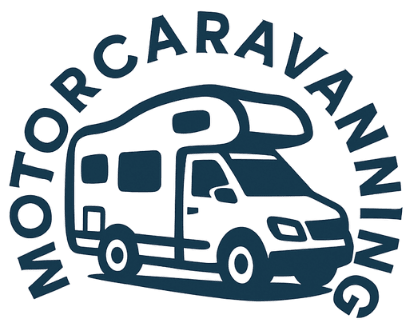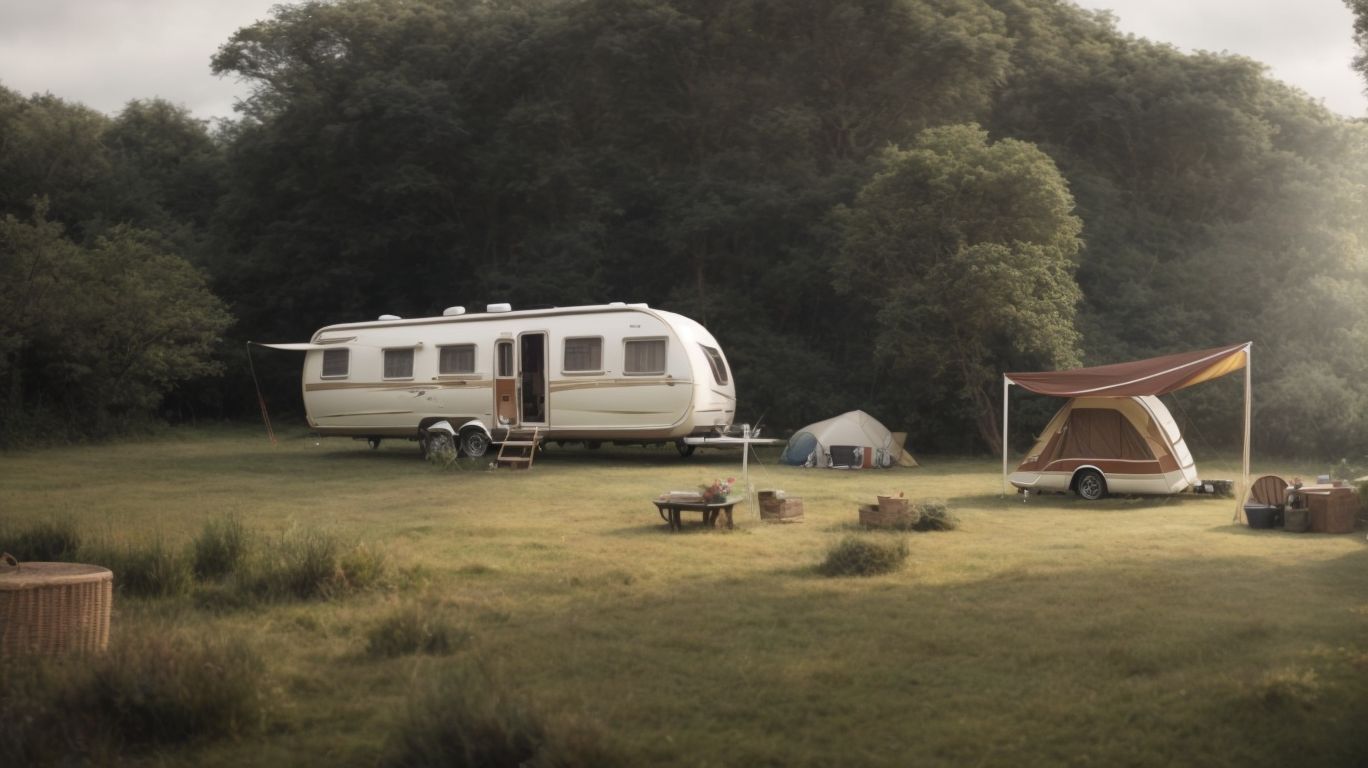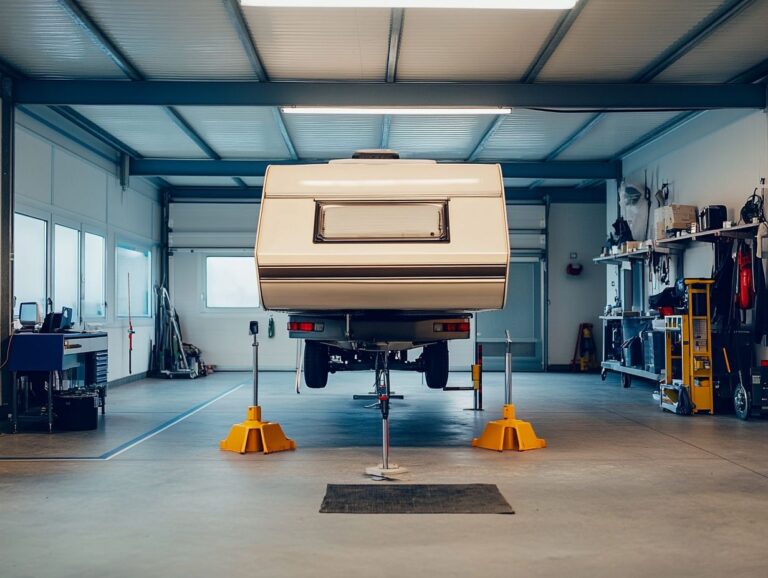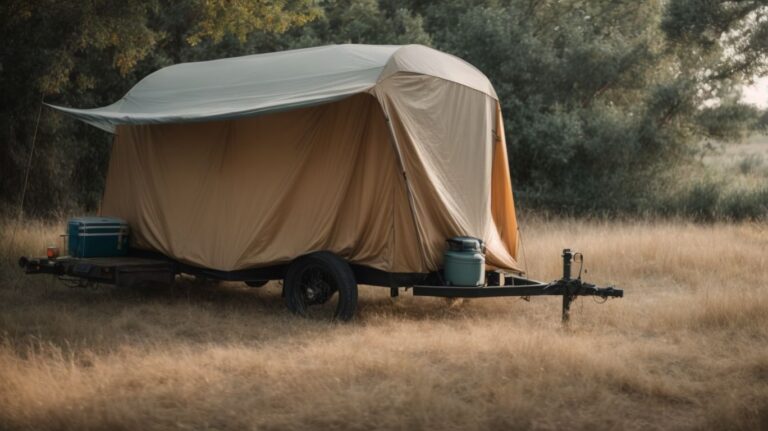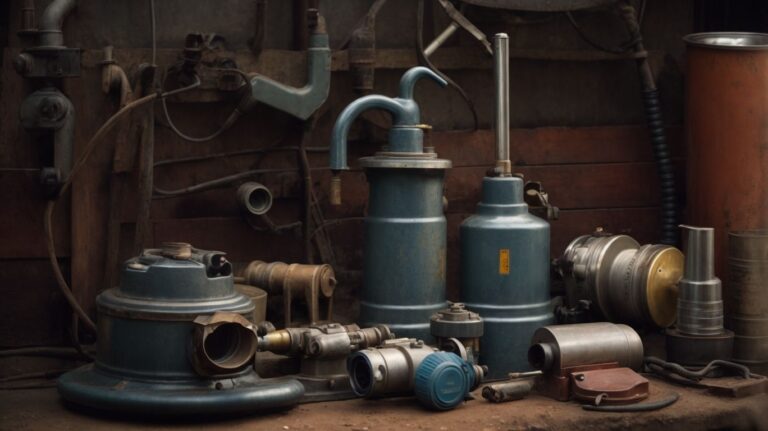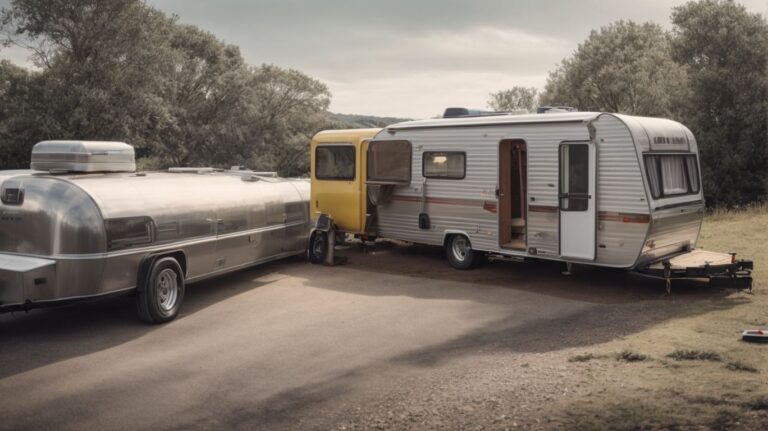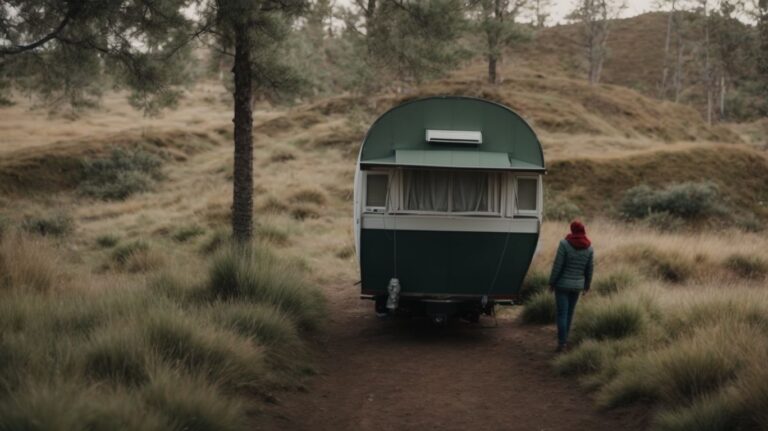Essential Guide to Caravan Stabilisers: What You Should Know
Are you planning a caravan trip and want to ensure a smooth and stable journey?
Caravan stabilisers are the key to a safe and secure towing experience. In this essential guide, we will discuss what caravan stabilisers are, why you need them, the benefits of using them, the different types available, how to choose the right one for your needs, installation and usage tips, as well as maintenance and care tips.
Stay tuned to make your next caravan adventure a breeze!
Key Takeaways:
What Are Caravan Stabilisers?
Caravan stabilisers are devices designed to enhance the stability and security of a caravan during towing or when stationary.
These innovative devices play a crucial role in counteracting the swaying motion of a caravan, commonly experienced when subjected to crosswinds, passing vehicles, or uneven road surfaces. By reducing this swaying, caravan stabilisers greatly improve driving control, reduce fishtailing, and enhance overall safety on the road.
Leading brands such as Al-Ko and BPW have developed advanced stabiliser systems with features like friction pads, telescopic tubes, and intelligent sensors that actively detect and correct any lateral movement. This proactive approach not only enhances stability but also ensures a smoother and more comfortable journey for caravan owners.
Why Do You Need Caravan Stabilisers?
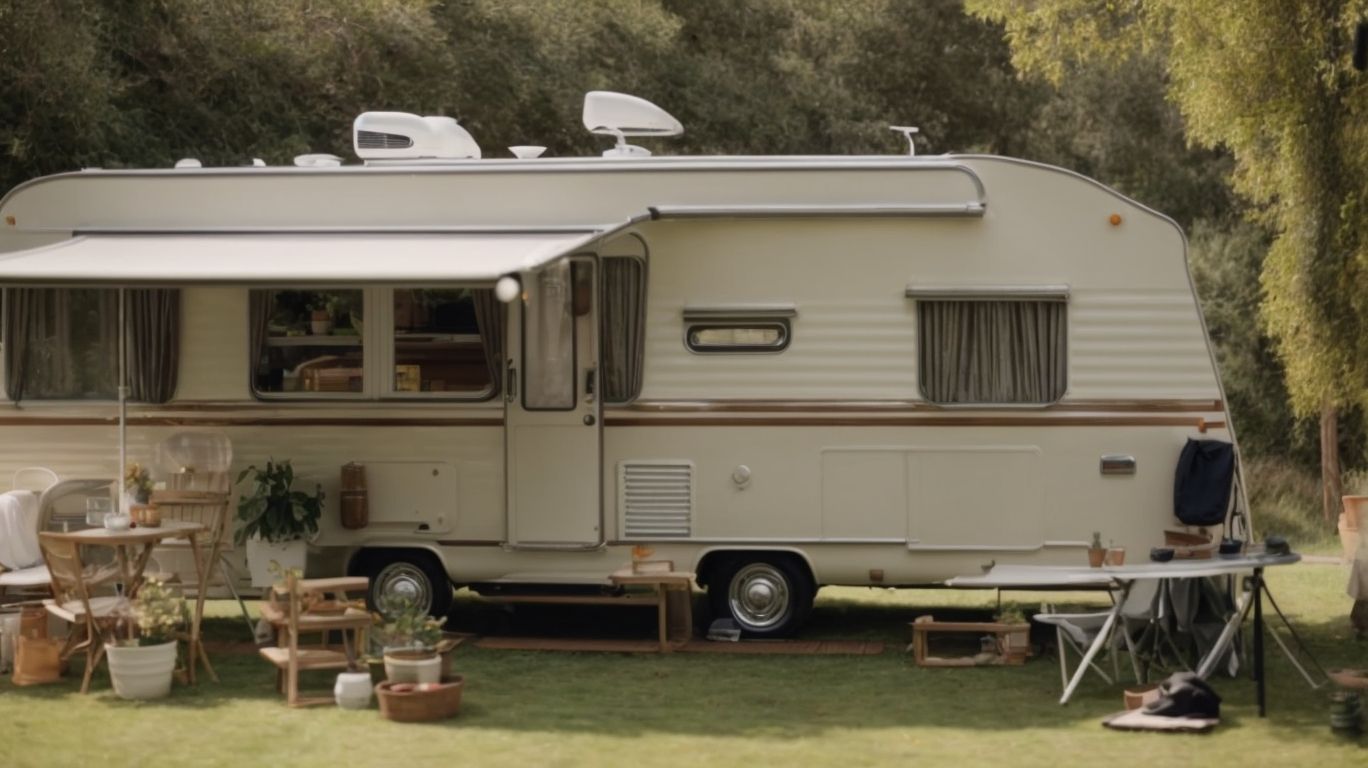
Motion Activated RV Step Lights, 10 LED Battery Operated Motorhome Motion Sensor led Light Strip, Magnetic Night Light Bar for Motorhome Travel,Travel Trailers, Camper (2 Pack)
- 【Infrared Induction Motion Detection】Motion sensor light on the PIR sensor can detect human movement, 10 feet once your approach is detected, the rv step lights will automatically turn on in the dark, in the absence of detected motion or other light sources, 18 seconds after the automatic shutdown, a large degree of power savings and improved durability.
Camco TST MAX RV Toilet Treatment Drop-INs - Control Unwanted Odors & Break Down Waste and Tissue - Safe Septic Tank Treatment - Orange Scent, 30-Pack (41183)
- Toilet Deodorizer With Reactive Odor-Eliminating Technology: Experience a powerful RV odor eliminator that stops RV black tank odors for up to 7 days. Just (1) toilet drop in treats camper toilets with up to a 40-gallon tank.
THANSTAR Collapsible Dish Drying Rack Portable Dinnerware Drainer Organizer for Kitchen RV Campers Travel Trailer Space Saving Kitchen Storage Tray
- 【Food Grade Material】Made from eco-friendly PP+TPR material that is BPA Free and Food-Grade. The flexible material allows the dish strainers for kitchen counter to collapse flat for easy space-saving and storage, making the most of your kitchen countertop.
Camco RhinoFLEX 20-Ft RV Sewer Hose Kit - Features Clear Elbow Fitting w/Removable 4-in-1 Adapter - Connects to 3” Slip or 3”/3.5”/4” NPT Threaded Sewer Connection (39742)
- Superior RV Tank Dumping: Streamline RV holding tank dumping with Camco’s RhinoFLEX 20' Camper Sewer Hose Kit. Built tough & flexible, this all-inclusive RV septic hose system provides simple & effective tank dumping on your camping adventures.
Camco Tastepure RV Water Filter - New & Advanced RV Inline Water Filter with Flexible Hose Protector - GAC & KDF Water Filter - Made in USA - Camping Essentials for Fresh Drinking Water (40043)
- Advanced 6-Step Filtration Technology: Experience the extraordinary power of Hex-Flow Technology & its remarkable 6-step filtration process. Every layer works together to provide you with water that is exceptionally clean.





Credits: Motorcaravanning.Com – Mason Miller
Caravan stabilisers are essential to mitigate swaying, improve weight distribution, and enhance overall safety and comfort during travel.
One of the key benefits of caravan stabilisers is their ability to reduce the side-to-side movement, commonly known as swaying, that can occur during towing. This reduction not only provides a smoother and more stable ride for the occupants of the caravan but also minimizes the strain on the towing vehicle, resulting in better control and handling.
Moreover, caravan stabilisers play a crucial role in optimizing weight distribution across the caravan, ensuring that the load is evenly distributed. This helps prevent the caravan from swaying excessively due to improperly distributed weight, reducing the risk of accidents and wear on the vehicle components.
What Are the Benefits of Using Caravan Stabilisers?
Using caravan stabilisers offers numerous benefits, including improved stabilisation, enhanced safety, greater comfort, and efficient levelling.
Caravan stabilisers can significantly enhance the stability of your vehicle, making your journey more enjoyable and safer. The stabiliser legs play a crucial role in reducing sway and vibrations, especially when faced with challenging road conditions or strong winds. By utilizing digital levels, you can achieve precise and accurate levelling, ensuring a comfortable experience inside the caravan.
The incorporation of digital tools simplifies the levelling process, saving you time and effort. The impact of stabiliser legs combined with digital technology results in a smoother ride, minimizing the risk of accidents and providing a stable foundation for various activities during your trip.
Types of Caravan Stabilisers
Caravan stabilisers come in various types, including traditional stabilisers, friction stabilisers, electronic stabilisers, and air suspension stabilisers.
Traditional stabilisers are the fundamental choice, offering reliable resistance to sideways movement. They work on mechanical principles, using weight and motion to create the stabilising effect.
Friction stabilisers utilize friction pads to dampen any swaying motion of the caravan, providing a smoother towing experience. These are ideal for moderate towing conditions.





Electronic stabilisers use advanced sensors and actuators to detect and counteract sway instantly, enhancing stability and safety during towing.
Air suspension stabilisers, on the other hand, use air pressure to adjust the suspension system based on road conditions, offering a more adaptive and comfortable towing experience.
Traditional Stabilisers
Traditional stabilisers use a hitch and towing bracket system to provide efficient and stable stabilisation for caravans.
This mechanism works by connecting the caravan’s chassis to the towing vehicle using the hitch and towing bracket.
When the caravan sways, the stabiliser leverages this connection to counteract the movement, keeping the whole setup steady on the road. One of the key benefits of this method is the enhanced safety it provides during towing, reducing the risk of accidents caused by sway.
The traditional stabilisers are known for their durability and reliability, making them a preferred choice for many caravan owners.
Friction Stabilisers
Friction stabilisers offer side-to-side levelling capabilities using devices such as stabiliser legs to reduce caravan movement through friction.
Stabiliser legs play a crucial role in ensuring a stable platform for the caravan. When deployed, these legs anchor the caravan to the ground, preventing unwanted movement.
Along with stabiliser legs, other levelling devices such as levelling blocks and wheel chocks further enhance stability. Levelling blocks help to adjust the height of the caravan, ensuring it sits evenly. Wheel chocks secure the wheels in place, preventing rolling on uneven surfaces.
By combining these components, caravan owners can achieve optimal stability and minimize the effects of movement caused by external factors.





Electronic Stabilisers
Electronic stabilisers utilize hydraulic jacks and digital levels to enhance stabilising efficiency and precision for caravans.
Hydraulic jacks in electronic stabilisers play a crucial role in providing the necessary support and balance to the caravan. These jacks can rapidly adjust the height of the stabilisers, ensuring a stable base for the vehicle.
On the other hand, digital levels contribute to the precision by accurately measuring the tilt and inclination of the caravan. This real-time data allows the stabilisers to make instant adjustments, compensating for any uneven terrain or shifting weight distribution.
Air Suspension Stabilisers
Air suspension stabilisers incorporate levelling ramps for precise front-to-back and side-to-side levelling of caravans.
These levelling ramps play a crucial role in ensuring that the caravan remains stable and balanced during travel, particularly when parked on uneven terrain. By automatically adjusting the suspension height based on the caravan’s weight distribution, the system can counteract any potential swaying or tilting movements, enhancing overall safety and comfort.
The advantages of this type of stabiliser are abundant. Achieving a well-balanced setup leads to improved towing stability, reduced wear on tires and suspension components, and enhanced handling characteristics. The levelling ramps contribute to a smoother towing experience, minimising instances of pitching and rolling for a more enjoyable journey.
How to Choose the Right Caravan Stabiliser for Your Needs?
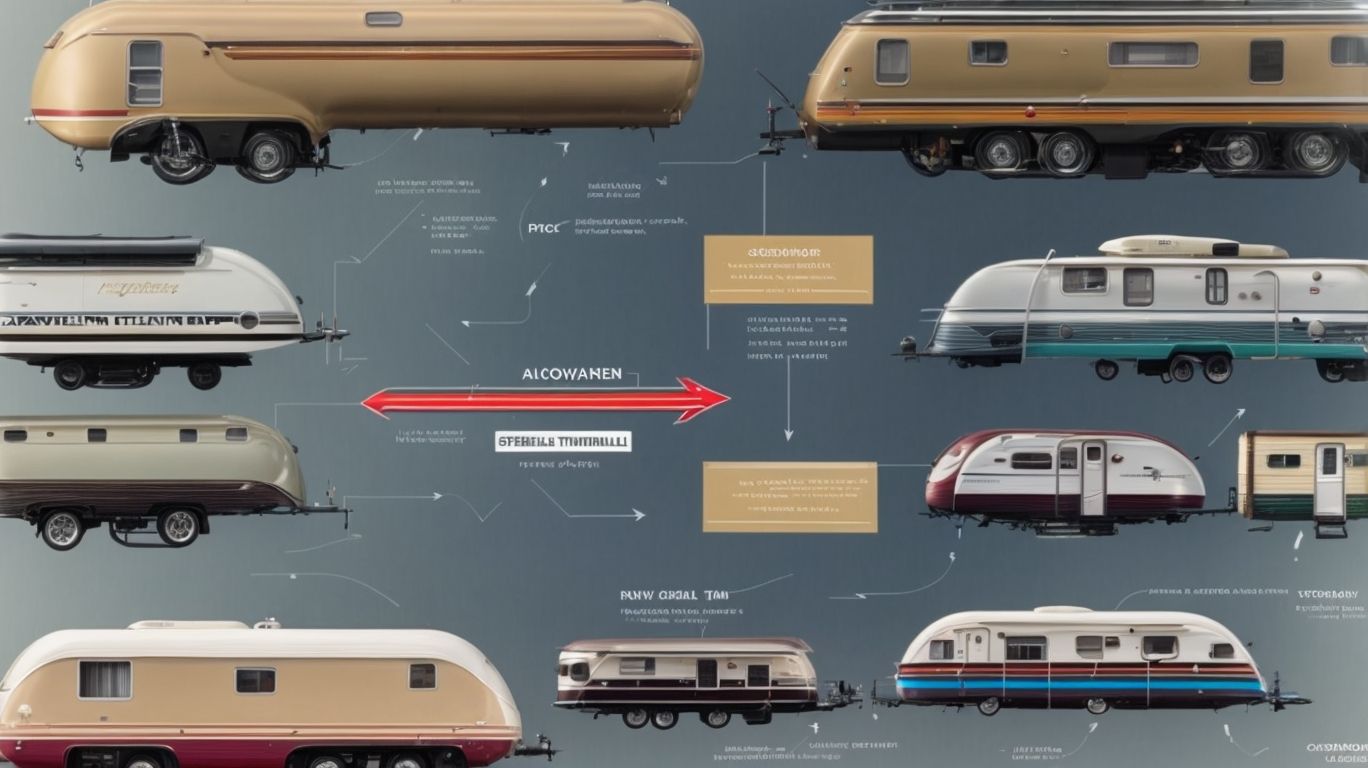
Credits: Motorcaravanning.Com – Tyler Adams
Selecting the appropriate caravan stabiliser involves considering factors such as weight distribution, compatibility with your vehicle, and user reviews for reliability.





Weight distribution plays a critical role in ensuring a safe and smooth towing experience. A caravan stabiliser designed to handle the weight distribution effectively can prevent swaying and improve overall control on the road. Checking the compatibility of the stabiliser with your specific vehicle is essential to guarantee proper installation and performance. Researching user reviews can give you valuable insights into the actual performance and durability of different stabiliser models, helping you make an informed decision based on real-world experiences.
Consider Your Caravan Weight
When selecting a caravan stabiliser, it is crucial to consider the weight of your caravan and ensure proper distribution on a level horizontal plane.
The weight of your caravan plays a significant role in determining the effectiveness of the stabilising system. Caravan weight affects how much force is exerted on the stabiliser when the caravan is in motion or stationary. If the weight is not properly distributed, it can lead to issues such as swaying, pitching, or even loss of control while towing.
Choosing a stabiliser that can handle the specific weight of your caravan is essential for optimal performance. An appropriately matched stabiliser will help minimize any potential instability, resulting in a smoother and safer towing experience.
Check the Compatibility with Your Car
Verify the compatibility of the caravan stabiliser with your vehicle’s towing bracket system to ensure seamless integration and optimal performance.
Establishing a well-suited connection between your caravan stabiliser and towing system is crucial for safe and efficient towing experiences. A mismatch in compatibility could lead to instability during travel, risking the safety of both your vehicle and other road users. By ensuring that the stabiliser is properly aligned and designed to work seamlessly with your towing bracket system, you can significantly reduce the chances of swaying, pitching, or other handling issues that may arise from an ill-fitting setup.
Look for User Reviews
Explore user reviews and feedback on caravan stabilisers to gauge their performance, stability, and security for your mobile home.
User reviews play a vital role in helping potential buyers understand real-world experiences with caravan stabilisers. By looking into testimonials, you can uncover valuable insights into the durability, ease of use, and overall satisfaction levels associated with different models. This firsthand information allows you to make an informed decision based on the experiences of others who have tested these stabilisers in various conditions. User feedback often sheds light on any potential flaws or strengths that may not be immediately apparent through technical specifications alone. Researching these reviews can provide a more comprehensive view of the product before making a purchase.
How to Install and Use Caravan Stabilisers?
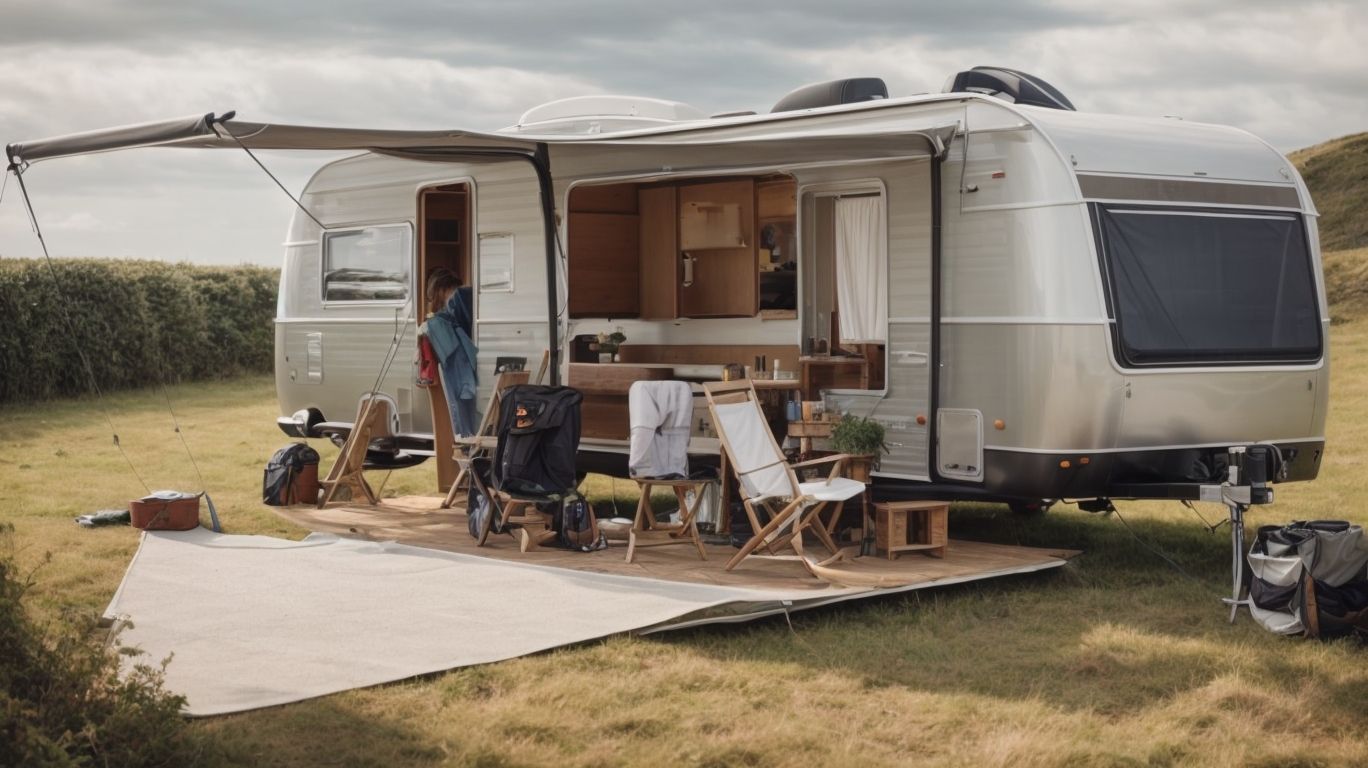





Credits: Motorcaravanning.Com – Brandon Wilson
Installing and using caravan stabilisers involves following specific steps for installation and implementing tips for their proper use during travel.
When installing caravan stabilisers, ensure that the area is level and free from any obstacles. Then, carefully position the stabilisers under the caravan chassis, making sure they are evenly spaced and securely attached. Use the provided tools to tighten the stabilisers according to the manufacturer’s instructions.
During travel, always double-check that the stabilisers are correctly engaged before setting off. It’s essential to periodically inspect them for any signs of wear and tear, and grease any moving parts to maintain smooth operation.
Installation Steps
The installation of caravan stabilisers typically involves deploying stabiliser legs and using levelling devices to set up the caravan securely.
When deploying stabiliser legs, begin by positioning the caravan on a level surface to ensure stability. Extend the legs evenly on both sides, adjusting the height to make contact with the ground firmly. Utilising levelling devices such as levelling ramps can assist in achieving proper positioning. These ramps help in raising the caravan to the desired height for efficient stabilisation.
Another practical tip is to double-check the tightness of the stabiliser legs after deployment. Loose legs can compromise the stability of the caravan. Make sure to follow the manufacturer’s guidelines for optimal installation and maintenance. Properly installed stabilisers enhance safety and comfort during your caravan adventures.
Tips for Proper Use
To ensure optimal performance, regular maintenance and proper use of caravan stabilisers are essential for safe and comfortable travel.
Regarding maintaining your caravan stabilisers, start by checking for any signs of wear and tear such as loose bolts, rust, or cracks. It is recommended to inspect them before every trip to catch any issues early.
Make sure to clean your stabilisers regularly to prevent dirt and debris from affecting their functionality. Greasing moving parts can also help reduce friction and prolong the lifespan of the stabilisers.





Remember to follow the manufacturer’s guidelines for proper installation and adjustment to ensure they are providing the necessary support for your caravan during travel.
Maintenance and Care for Caravan Stabilisers
Proper maintenance and care of caravan stabilisers include regular cleaning, inspection, lubrication, greasing, and appropriate storage practices.
Regular cleaning of caravan stabilisers is crucial to ensure their longevity and optimal performance. Begin by wiping down the stabilisers with a damp cloth to remove dirt, grime, and any debris that may have accumulated. For a more thorough clean, use a mild detergent solution and a soft brush to scrub away stubborn residue. Rinse the stabilisers thoroughly with clean water and allow them to dry completely before moving on to the next step.
Inspection is another essential aspect of maintaining caravan stabilisers. Check for any signs of wear and tear, such as rust, cracks, or bent components. Pay close attention to the connection points and make sure everything is securely in place. If you notice any damage, it’s important to address it promptly to prevent further issues.
Lubrication plays a vital role in ensuring smooth operation of the stabilisers. Apply a suitable lubricant to the moving parts, such as hinges and joints, to reduce friction and prevent premature wear. Greasing critical parts, like the pivot points, will help maintain proper function and prevent squeaking noises during operation.
When not in use, it is important to store caravan stabilisers properly to protect them from environmental elements. Store them in a dry, covered area to prevent corrosion and damage from exposure to moisture. If possible, consider using protective covers or cases to further shield the stabilisers from dust and debris. By following these maintenance steps diligently, you can extend the lifespan of your caravan stabilisers and enjoy safe travels on the road.
Regular Cleaning and Inspection
Regular cleaning and inspection of caravan stabilisers are essential to ensure smooth operation, while proper lubrication and greasing maintain their functionality.
It’s crucial to incorporate these maintenance tasks into your routine to prolong the lifespan of your stabilisers and prevent costly repairs down the road. When dirt, debris, or rust build up on the stabiliser components, it can lead to friction, affecting their ability to function optimally.
Regularly inspecting for any signs of wear and tear such as cracks, dents, or loose parts can help catch potential issues early on before they escalate. Lubricating the moving parts of the stabiliser not only reduces friction but also protects them from corrosion, ensuring smooth and effortless towing.
Lubrication and Greasing
Applying lubrication and greasing to caravan stabilisers ensures smooth operation and prolongs the life of these essential devices.





Proper lubrication and greasing are crucial steps in maintaining the functionality and durability of caravan stabilisers. By regularly applying lubricants and greases to the moving parts and hinges of the stabilisers, friction is reduced, allowing for effortless deployment and retraction.
This preventive maintenance not only enhances the overall performance of the stabilisers but also minimizes wear and tear on the components, ultimately extending their lifespan. Caravan owners should follow manufacturer recommendations regarding the type and frequency of lubrication to ensure optimal function and prevent premature deterioration.
Storage Tips
When not in use, storing caravan stabilisers in a stable and secure manner helps maintain their condition and functionality for extended periods.
One of the key tips for proper storage is to clean the stabilisers thoroughly before putting them away. Remove any dirt, grime, or debris accumulated during use. This prevents corrosion and damage to the components over time.
Consider investing in a designated storage bag or container to keep the stabilisers protected from external elements such as moisture, sunlight, and extreme temperatures. This adds an extra layer of security to prolong their lifespan.
Ensure that the storage area is well-ventilated to prevent condensation and moisture buildup, which can lead to rust and deterioration of the stabilisers. Avoid placing them directly on the ground; instead, use a designated rack or shelf to keep them elevated and protected.
Frequently Asked Questions
What are caravan stabilisers and why are they important?
Caravan stabilisers are devices attached to the tow bar of a caravan to improve its stability while being towed. They are important because they help prevent the caravan from swaying or fishtailing, which can be dangerous and cause accidents.
What types of caravan stabilisers are available?
There are three main types of caravan stabilisers: friction, hydraulic, and electronic. Friction stabilisers use friction pads to dampen movement, hydraulic stabilisers use a hydraulic system to resist movement, and electronic stabilisers use sensors and motors to actively counteract sway.
How do I know which type of caravan stabiliser is best for my caravan?
The type of caravan stabiliser you need depends on the weight and size of your caravan, as well as your towing preferences. It’s best to consult with a professional or do thorough research before choosing a stabiliser to ensure it is suitable for your specific caravan.





Do I really need a caravan stabiliser if my caravan is small?
Yes, even small caravans can experience sway while being towed, especially in windy conditions or when passing large vehicles. It’s always better to be safe than sorry, so investing in a stabiliser for your caravan, regardless of its size, is highly recommended.
Can I install a caravan stabiliser myself?
While some stabilisers come with DIY installation instructions, it is recommended to have a professional install it for you. This ensures that it is properly fitted and functioning correctly, reducing the risk of accidents while towing.
How often do I need to check and maintain my caravan stabiliser?
It is important to regularly check and maintain your caravan stabiliser to ensure it is in good working condition. This includes checking for wear and tear, lubricating moving parts, and tightening any loose bolts or screws. It is recommended to have a professional service your stabiliser at least once a year.
